Suunto is joining the fray of companies releasing major software updates over the last two weeks, with a suite of updates on their smartphone app that are available for all Suunto App-capable watches. The first part of this update changes the way the existing Suunto Coach feature works by now taking into account “hundreds of different parameters” to give more specific guidance. Meanwhile, for athletes that don’t care/need the Suunto Coach, they’ve also expanded their training load/recovery analytics – adding data sets that focus on training zones, recovery time, and how your training load/recovery/sleep is trending compared to the past 6 weeks.
Let’s just do a quick run-through of things. All of this stuff is on the tab at the bottom with the chart icon.
First up, is the revamped Suunto Coach. The ‘Suunto Coach’ type moniker has been around in various incarnations over the years, but this time it’s expanding to include what Suunto describes as hundreds of different data inputs. This includes everything from looking at your sleep levels, to your training load itself, to the breakouts of sport types within that load – for example, seeing that you might have a higher running volume this week compared to normal – putting you at a higher risk for injury. Or, that your post-workout survey (where it asks you how the workout felt), might have been less positive than normal (obviously, the solution for that is ice cream). Or even that it’s noticed a specific increase (or decrease) in the zones for your training volume.
For some of these items, Suunto Coach will give you very specific feedback. For example, if it detects lower sleep volume, it might say “A good night’s rest supports overall health”. However, Suunto says they won’t outright tell you that you’ve got poor sleep habits unless it falls below an exceptionally low threshold. Likewise, if you’ve got far too much intensity in a given week, Suunto will nudge you to more gradually increase the intensity next time.
However, at this stage Suunto isn’t trying to give you specific training guidance, because they don’t know what your training goals (or approach) are. In talking with them, they want to try and walk a bit of a tightrope of using algorithms to learn from your specific history and give you feedback relative to that, rather than applying other coaching/training methodologies.
It’ll be interesting to see if they can stick the landing on that. Arguably, the people that need that more specific guidance are the ones that are going to use this feature the most (whereas others that don’t need that guidance are likely coached or have deeper knowledge already). So trying to avoid stepping on toes (feelings) could be tricky.
Next, you’ve got a slate of new Training Zone trending bits. In fact, that’s a lot of what’s been added here – the ability to see how things compare to previous 6-week chunks. Suunto selected 6-weeks as their ideal reference timeframe, versus either a 4-week or 12-week trend that other companies use. To me, 6-weeks is perfectly fine. Each week though is compared to the full/complete set of the reference period. For example, as you start the week, you’ll see your current total for that week, compared to your normal total for the entire week (against that trailing 6-week period) – such as this Training Load one here. At left, a block I did back a few weeks ago of purely cycling. At right, a slightly more balanced triathlon block from one of the Suunto triathletes. Note the coloration of sport types
Likewise, you’ll see the same for ‘Training Intensity’, in various categories, including Heart Rate, Pace, Running Power, and Cycling Power.
The above chart is actually kinda interesting though. In my case, I’ve been riding a lot the last 6 weeks with the Hammerhead Karoo 2 cycling GPS. That unit syncs all my rides into the Suunto platform due to a partnership the two have around heat maps. However, this does not at present include intensity levels for these different components. So, in this case, those are excluded, except for workouts I’ve done with a Suunto device (like the trainer workout above on that week).
Next, with Training Volume, you’ll see the breakout by sport types. This is likely most useful for triathletes, to be able to see their swim/bike/run breakouts. I like the fact that they collapse the different types of running into a single running category. For example, treadmill run and trail running are considered all just ‘running’.
Next, there’s tracking of Cardio and Muscular training load. In this chart it’ll categorize the impacts of your training load automatically, as part of the Suunto Coach components – then it’ll look to classify your training model – such as polarized base training, or Sweetspot. Again, like before, this won’t include the Hammerhead Karoo data – which is kinda too bad, since I’d imagine it shouldn’t be too hard to account for that since it’s all one sport (cycling). Hopefully down the road that’ll change.
In any case, the cardio impact breakouts are based on the intensity, duration, and load. Whereas the muscle impacts are based on sport type.
Finally, we get into three different recovery-focused areas. The first is a look at TSB (Training Stress Balance) trending, again, in relation to your historical norms. Then there’s a look at the time you started sleep, alongside your duration. Suunto noted that they made a conscious decision here to include the time you fell asleep because they said that for most people, its more effective to remind them that usually going to be earlier results in more sleep (as most people tend to be blocked from sleeping in later due to work/etc commitments). It’s a subtle shift, but actually somewhat unique in the watch realm.
Next, there’s the ‘Feeling’ change/shifts. After each workout you complete on your watch, it’ll ask how you felt. Suunto will trend these over time. Suunto noted this is specifically different than their competitors, which ask how hard/easy the workout felt. Whereas Suunto is asking did you feel good/bad. They said that this helps to separate out workout intensity-driven comments, and instead focus on something most athletes do actually get right: Whether or not they felt good about the workout afterwards. From there, they’ll trend both the current week, and the six-week average.
And then finally, there’s the CTL (Chronic Training Load) section, with similar trending there:
Ultimately, this is a nice suite of changes – clearly aimed at the start of the race season for many endurance sports athletes. Certainly, a number of athletes may have this information already displayed somewhere else. But having it handy in the app, front and center, will be beneficial for those that aren’t paying for or using other 3rd party platforms. Plus, it’s nice to see this available for all existing Suunto App watches – no matter how old, as long as it uploads into the app, versus only some small set of just-released watches/devices like we see with some other companies.
Oh – and note that full roll-out of these new features may take up to a week for all users to start seeing them, via the updated app.
With that – thanks for reading!
FOUND THIS POST USEFUL? SUPPORT THE SITE!
Hopefully, you found this post useful. The website is really a labor of love, so please consider becoming a DC RAINMAKER Supporter. This gets you an ad-free experience, and access to our (mostly) bi-monthly behind-the-scenes video series of “Shed Talkin’”.
Support DCRainMaker - Shop on Amazon
Otherwise, perhaps consider using the below link if shopping on Amazon. As an Amazon Associate, I earn from qualifying purchases. It doesn’t cost you anything extra, but your purchases help support this website a lot. It could simply be buying toilet paper, or this pizza oven we use and love.

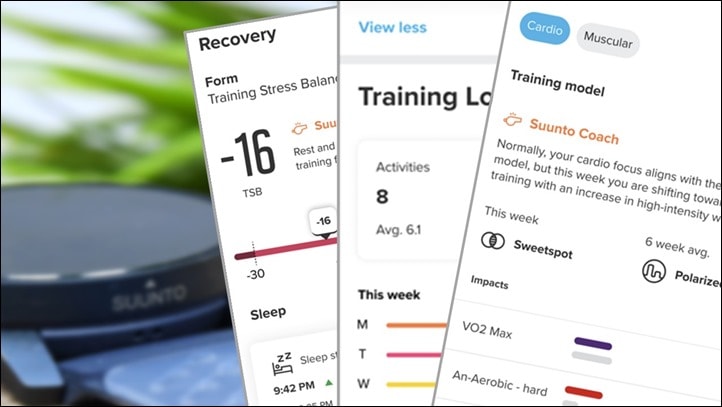
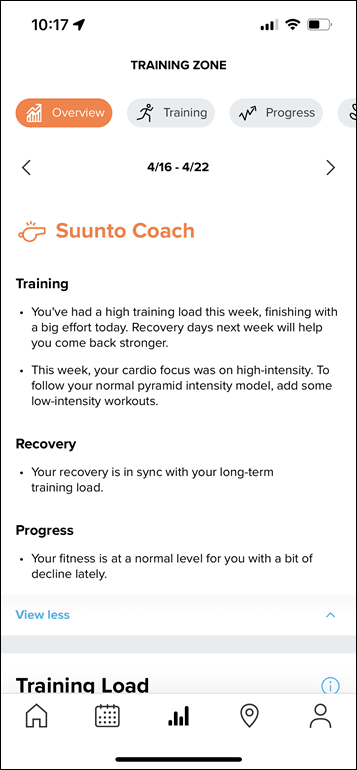
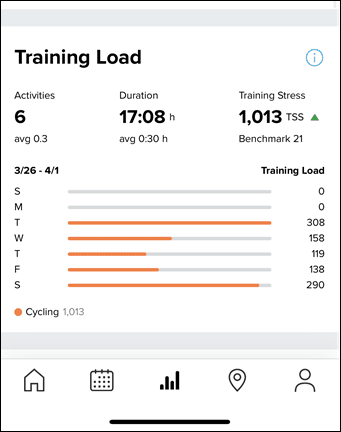

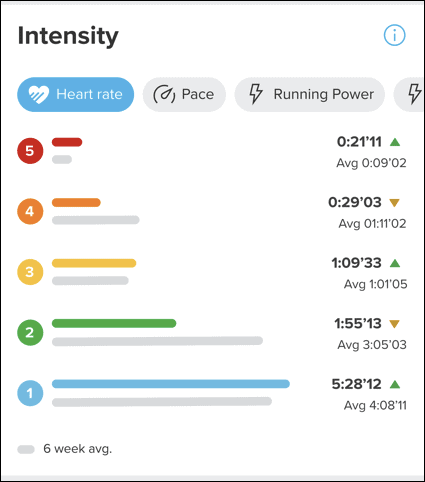
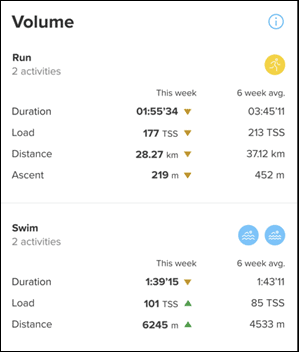
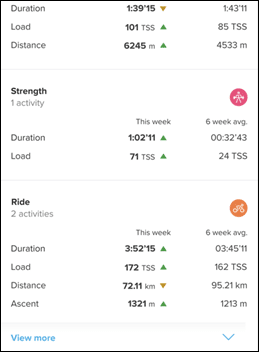
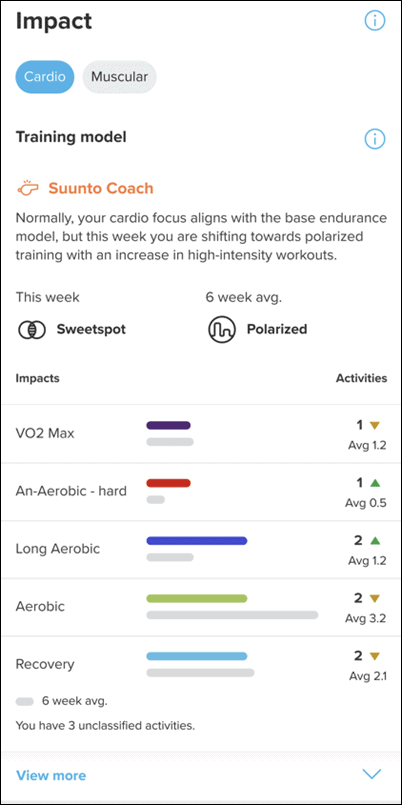
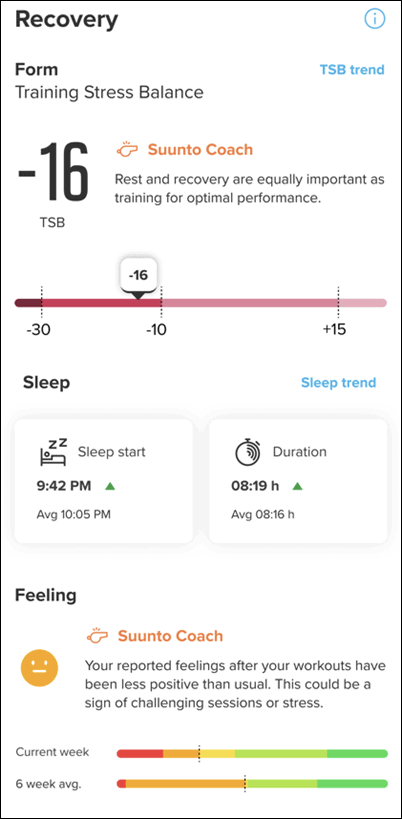
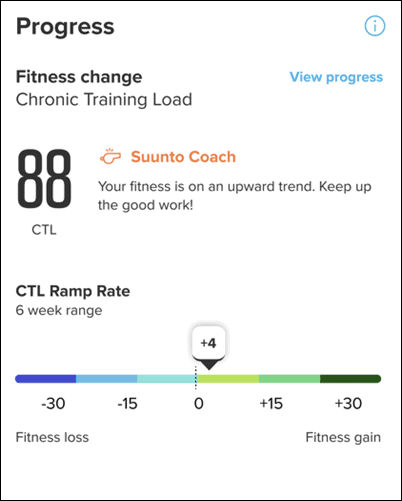





















Great news. I also have a Karoo 2… But not a Suunto device. Does the karoo/suunto integration means that I could benefit of all of this?
Thanks.
You’ll benefit from portions of it. For example, things with just zones won’t show up (like intensity or power zones). Whereas things with time (overall) do show up.
What algorithms are they using here? Their own, trainingpeaks or firstbeat?
TP for training related metrics, FB for fitness (sleep, resources…) and their own as well.
super and very helpful update. It’s great to see that Suunto is still doing it differently, but good! Well done!
Great news!
How about the issues between Suunto and Strava?
I see on Strava always double steps, device name only Suunto. I use now 9 Peak Pro.
Hope this will be solved soon!
Any word from Suunto about Strava Live Segment support? There were rumors last Fall, but not a peep since.
The loyalty that some people show toward this brand makes no sense. I used the Suunto 9 Baro for 2 years and I cant tell you that this brand is decades behind the ball. Their products are worth $200-$300 at best, and yet they’re charging premium prices.
Me personally I’m willing to pay for the premium for their design. I’m a Suunto 9 Baro Titanium user, and I just can’t get used to the look of Garmin watches, too sporty and rugged for my taste (and maybe too digital?). I guess I want my watch to be more like….traditional watches? I used to complain a lot about Suunto apps, but they’re making lots of improvement over the past year. However I do wish they can make better and brighter watch screens, it’s usable but not really great to read outdoor….
You can say the same for Apple vs Android users. If something does not fit your taste it does not mean that everybody should be on your site.
For example I used to have Fenix 6X that showed ‘always’ ~10% less distance (and I was not alone check their forms) on the other hand the Suunto 9 Baro was 200m more So on a Half marathon I had the bare + 200m (running in the woods) and the Fenix showing 18.1???
SO if you like having metrics just for the sake of having them be my guest. I do not need to track my ‘walking the dog’. I need accuracy!
Of course they’re not decades behind, that’s hyperbole. Yeah, they don’t have all of the features Garmin has, but I don’t want music or contactless or the consumer stuff. The only real absences from my 9 Baro (which is a five year old model) are blood oxygen and maps. Both of which are just nice to have rather than needed. Like Greg, I love the design of Suunto. If I had to replace my watch tomorrow, I’d stick with them because their design is really good. I’m a designer myself and love Scandinavian design principles. Also for all the flack the app gets – I find it way better than the Garmin app. Creating routes is so easy and effective. The interface is clean. I do hope they iterate the 9 Baro soon, but so far no other manufacturer has brought out a watch that tempts me to switch. Being able to mix good simple design and outdoor functionality is pretty rare.
First thing to look at is the design, I’m even willing to use customizing options if available. Nearly all brands and models already have basic features like GPS, simple navigation, HR. Even if I read all review details with interest, in the end basics is enough for me, not looking for music or payment functions. I’m currently looking for a new watch, hopefully Suunto will release 10 Peak Pro with amoled display.
As sports tech evolves towards more and more advanced and abstract metrics and features, it would be great to have reviews evolve with it. Sometimes it seems the advanced features are mentioned in the feature lists, comparisons, and are described, but as far as testing goes, these features seem to get a free pass.
Is there any worthwhile methodology to verify for example how accurate these new Suunto form & fitness metrics, or how sane Garmin’s training readiness & daily suggested workout are?
Is there anything here that is similar to Garmin’s Training Readiness score?
No, not at this point.
Hi Ray. Thank you for always delivering. As a long time Garmin customer I am a bit jealous of these mahout overhauls from COROS and now Suunto. Do you have any idea on whether Garmin is thinking of doing some of the same (as it’s needed), and if so, how far they are?
What’s your personal take on Garmin’s “Analytics” and data curation compared to other players in the market, plus how much do/or would you rely on it if available?
Best
Jacob
Denmark
To be honest, Garmin is still pretty far ahead of both COROS and Suunto here in the physio-type realm. Sure, both Suunto and COROS might have a specific metric here or there that Garmin doesn’t, but that’s mostly dwarfed by the tidal wave of metrics, categorization, etc
Certainly, one could argue the benefits of those metrics – but things like Training Readiness have been near-universally received good marks from most on being one of the best attempts by anyone thus far.
Training Status 2.0 has helped, albeit still has some gaps like I noted in my recent reviews with the VO2max flat-line challenges. But again, nobody else actually has anything approaching that. With COROS, it’s basically still just a runners physio platform. Those metrics largely don’t account for anything outside of running still, at least in any meaningful way.
Suunto does a better job than COROS of showing you your load (as seen in this update) across all these sports. But, they stop short of clear-cut guidance around whether that load is too much/little – instead, preferring to nudge you.
I’d say though if you have an older Garmin device, you might not be seeing all these new changes.
I feel that Suunto quietly and with few resources is doing a great job, I just hope that Liesheng can provide them with resources for a new hardware before 2024, if they do this I think they will be behind Garmin and ahead of most of their competition…I hope that finnish guys come back again.
What do you think?
unfortunately this does not work with the suunto ambit 3 peak, i use this watch with polar H10 and the section labelled “intensity” which underneath says heart rate, pace, running power these are all zeros despite using polar h10 not sure why im guessing the watch is too old or something.
What Suunto device did you use to test the new interface? I’m thinking of going with a 9 Baro Ti or the new Peak 9 Pro.
Right now it doesnt use sleep data from other sources (whoop) via apple health, so this means you must sleep with the watch to have sleep data.
Also:
(small typo should be ”going to bed earlier” instead of ” going to be earlier”)
I really wanted to love the 9 Peak; the design is so smooth. But Suunto was missing 2 key features that sent me back to a Fenix:
1. Custom workouts in alternate sports (Stand up paddle and Kayak specifically for me)
2. Saving multiple timers (I regularly use 30s, 60s, 2min, and 5min timers at work)
Ray do you have any sense if Suunto has anything in the works like Garmin’s race predictor? That is the one feature missing from the Vertical that is driving me nuts.